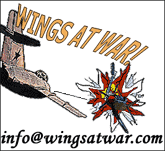Western Front Painting Guide
![]()
THE ALLIES
British planes were given coats of protective pigments, chocolate brown or more commonly olive green. Undersides were left as plain varnished fabric in various shades of yellow ochre. The French and Americans used a variety of patterns based on four or five earth colours; sage and dark greens, tan and medium to dark browns.
The French were first to use a roundel and rudder stripes as recognition symbols. They were based on the national flag, the roundel being modeled on the French revolutionary cockade made by forming a circle with the flag. This style was adopted by the other Allied powers, the British adding a thin outline in white. The French, Belgians and Americans only carried national markings on the wings whereas the British and Germans also had them on the fuselage sides.
Unit markings were introduced when large scale dogfights began to make it difficult to spot the rest of your unit. The French used symbols such as the Groupe de Combat 12's stork, a procedure copied by the USA.
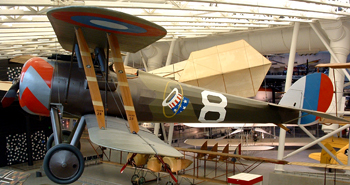 |
|
American Nieuport 28 at the National
Air and
Space Museum, Dulles Airport Washington DC |
Many pilots had a somewhat warped sense of humour, Charles Nungesser's mount was decorated by symbols of death; skull and crossbones, coffin, candlesticks and black heart. The Canadian William Barker had an arrow piercing a red heart on his Camel.
THE GERMANS
A fairly common standard for German fighters was a scheme including green and mauve wings and unpainted beige wood fuselage. In late 1917 a lozenge pattern was introduced. This was printed directly on to the fabric to save weight and consisted of four or five colours such as lilac, green and red of various shades ranging from dark to pastel light. Reconnaissance planes often used a 'Sky' scheme consisting of light blue or grey all over.
The great majority of German aeroplanes exhibited greater or lesser degrees of individual markings such as broad stripes, wavy lines, different coloured rear halves and innumerable, symbols and names. When the 'Flying Circus' system was introduced the different Jastas were given distinctive colourings such as black and white checks, yellow or red fuselages and so on. From March 1918 the German national marking changed from the curved Eisernes Kreuz to various forms of the straight-armed Balkenkreuz. Both were black outlined in white.
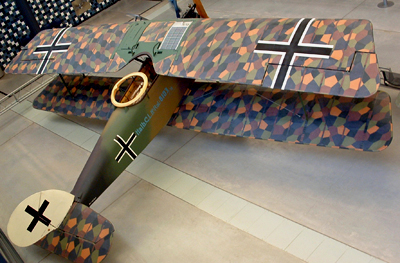 |
|
Halberstadt two-seater showing the pre-printed camouflage wing fabric and the style of Balkenkreuz used from early summer 1918 to the end of the wa |
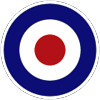
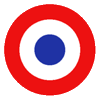
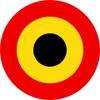
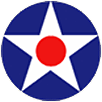
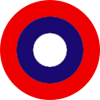
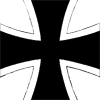
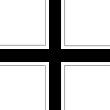
British, French, Belgian, US (to January 1918) and US (after January 1918) roundels
and German crosses
Click on the links below for more information
